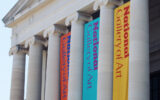Advice: Graphic Design Success – Practical Tips for Student Creatives
Graphic design is a dynamic and rewarding field that allows students to unleash their creativity while making a meaningful impact. Whether you’re just starting your graphic design journey or looking to refine your skills, these practical tips will help you succeed as a student creative in graphic design.
1. Master the Basics of Design Principles
Before diving into complex projects, it’s essential to grasp the fundamentals of design principles. Understand concepts like balance, contrast, alignment, and hierarchy. These principles are the building blocks of effective design and provide a solid foundation for your work. As part of your studies, you might have to complete written assignments about design too. But if drawing is more your forte than writing, then you can always utilise a service like GrabMyEssay, where you can hire an essay writer online and stop worrying about your writing skills!
2. Develop a Strong Conceptual Foundation
Great design begins with a solid concept. Before jumping into visuals, take the time to brainstorm and conceptualise your ideas. Understand the message you want to convey and how design elements can effectively communicate it to your audience.
3. Stay Inspired and Informed
Graphic design is an ever-evolving field, so staying updated is crucial. Follow design blogs, attend webinars, and subscribe to design magazines to keep your creativity flowing. Additionally, draw inspiration from various sources, including nature, art, and everyday life.
4. Networking and Collaboration
Networking is key to advancing your career in graphic design. Attend industry events, join design communities, and collaborate with fellow creatives. Building connections can lead to job opportunities and valuable insights. As a student, you may also want to build connections to help you with your academics. Topwritersreviews is one platform that can help you establish helpful academic resources. They showcase writing providers so that you could pick a trustworthy writing expert for your project.
5. Embrace Constructive Criticism
Feedback is a valuable tool for growth. Don’t be afraid to share your work with peers and mentors; be open to constructive criticism. Critiques help you identify areas for improvement and refine your design skills. Embracing constructive criticism is a cornerstone of personal and professional development in graphic design. Welcoming feedback from peers and mentors allows you to gain fresh perspectives and insights that can be transformative for your work. It’s not just about recognising areas for improvement; it’s also about learning from others and adapting to different design philosophies. By actively seeking and heeding constructive criticism, you refine your design skills and foster a culture of continuous improvement that sets you on the path to success in the dynamic world of graphic design.
6. Build a Strong Portfolio
Your portfolio is your calling card in the graphic design industry. Create a diverse portfolio showcasing your work, from logos and branding to web design and print materials. Keep your portfolio up-to-date as you complete new projects.
7. Explore Various Design Software
Familiarise yourself with popular design software such as Adobe Photoshop, Illustrator, and InDesign. Experiment with the best graphic design programmes and new tools to discover which suits your style and workflow best. Proficiency in these software programmes is a valuable asset in the graphic design industry. Exploring various design software is akin to building a versatile toolkit for your graphic design journey. Beyond the well-known Adobe suite, consider venturing into the niche or emerging software that caters to specialised design needs. Experimenting with various tools allows you to tailor your workflow to match your unique style and project requirements. In the ever-evolving field of graphic design, adaptability and proficiency in various software programmes enhance your skill set and open doors to a broader spectrum of creative possibilities, positioning you as a valuable asset in the industry.
8. Time Management Skills
As a student, balancing coursework and design projects can be challenging. Develop effective time management skills to meet deadlines without compromising on quality. Use tools like calendars and to-do lists to stay organised.
9. Typography Matters
Typography plays a significant role in design. Learn the principles of typography, including font pairing, hierarchy, and readability. The right typography choices can enhance the visual impact of your designs.
10. Real-World Experience
Real-world experience is an essential stepping stone for any aspiring designer. Seeking internships or freelance opportunities will provide you with practical exposure to client projects and deadlines, helping you understand the dynamics of the design industry. Additionally, working closely with clients will give you insight into their expectations and how to communicate your design concepts effectively. Through these real-world experiences, you’ll refine your technical skills and develop essential client-facing and project-management skills invaluable for your growth as a designer.
11. Problem-Solving Skills
Graphic design often involves solving visual problems. Develop strong problem-solving skills to address client needs and create effective solutions through design.
12. Create a Personal Brand
Just as you design for clients, create a personal brand for yourself. Craft a unique visual identity that represents your style and values. This brand can help you stand out in the competitive design industry.
13. Continual Learning
Graphic design is a field where learning never stops. Stay curious and committed to lifelong learning. Explore new design techniques, tools, and trends to remain relevant and innovative in your work.
14. Attention to Detail
The devil is in the details. Pay meticulous attention to every design aspect, from colour choices and spacing to image resolution. These details contribute to the overall quality of your work.
15. Experiment and Push Boundaries
Don’t be afraid to push the boundaries of design. Experiment with new techniques, styles, and trends. Innovation and creativity often emerge when you step out of your comfort zone.
16. Usability and User-Centred Design
In addition to aesthetics, focus on usability and user-centred design principles. Understand the needs and preferences of your target audience when creating digital interfaces or interactive designs. Conduct user testing to gather feedback and refine your designs for better user experiences. A design that looks appealing and functions intuitively can set you apart as a well-rounded graphic designer who prioritises the end-users.
17. Sustainability and Ethical Design
As the world becomes more environmentally conscious, graphic designers have a role to play in sustainable and ethical design. Consider the environmental impact of your design choices, such as paper usage for print materials or energy-efficient web design practises. Explore eco-friendly printing options and advocate for sustainable design principles in your projects.
Conclusion
Success in graphic design as a student creative requires combining technical skill, creativity, and a commitment to continuous improvement. By mastering design principles, staying informed, seeking feedback, and building a strong portfolio, you can pave the way for a rewarding career in graphic design. Embrace these practical tips, and your journey as a creative student will be fulfilling and successful.








